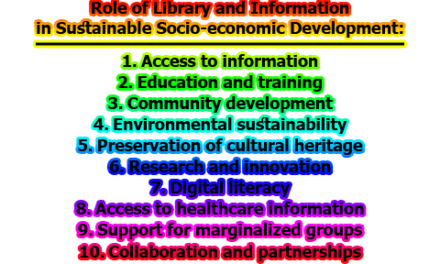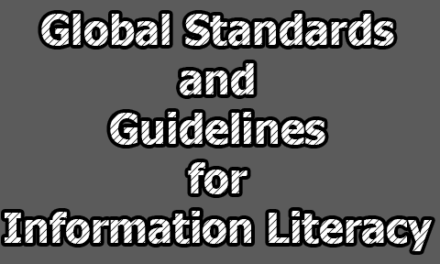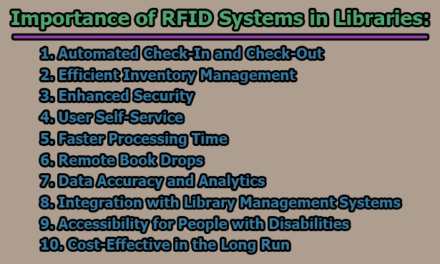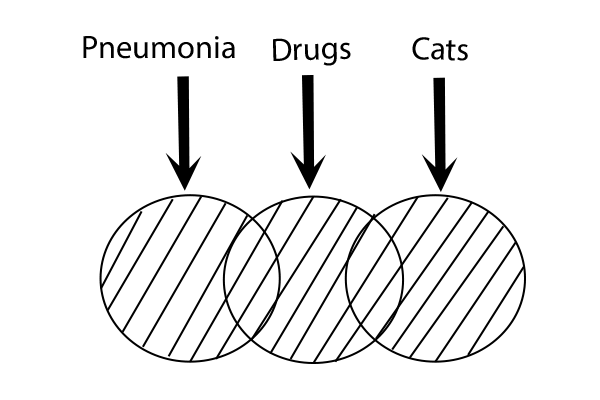The information search process is a critical step in decision-making, research, or learning. It involves identifying the need for information, selecting relevant sources, and evaluating the quality of information to make informed decisions. In today’s digital era, with the abundance of information available online, the challenge is not just finding information but also choosing credible sources. This article aims to provide an overview of the information search process, types of searches, and strategies to choose reliable sources for effective decision-making.
Information Search Process:
The information search process can be described as a series of steps that a person goes through to obtain information to fulfill their information needs. The process can be broken down into the following stages:
1. Identify the Need for Information: The first step in the information search process is to identify the need for information. This can be triggered by a question, problem, or decision that needs to be made. It is important to define the information need clearly to make the search process more efficient and effective.
2. Formulate the Search Query: Once the information needed is identified, the next step is to formulate a search query. This involves breaking down the information need into specific keywords and phrases that can be used to search for relevant information.
3. Select Relevant Sources: Once the search query is formulated, the next step is to select relevant sources of information. This can involve searching online databases, library catalogs, or other resources. It is important to select sources that are relevant to the topic and provide accurate and reliable information.
4. Search and Retrieve Information: The next step in the information search process is to search for and retrieve information from the selected sources. This can involve using search engines, browsing websites, or accessing online databases. It is important to use search techniques that are effective and efficient to retrieve the most relevant information.
5. Evaluate Information: Once the information is retrieved, the next step is to evaluate its relevance and credibility. This involves assessing the quality of the information, including its accuracy, completeness, and objectivity. It is important to critically evaluate the information to ensure that it is reliable and trustworthy.
6. Organize and Synthesize Information: The final step in the information search process is to organize and synthesize the information to make informed decisions. This involves categorizing and summarizing the information to identify key findings and trends. It is important to organize the information in a way that is easy to understand and use.
Types of Searches:
There are different types of searches that can be used to retrieve information. The type of search used depends on the information needed and the sources available. The following are the different types of searches:
A. Keyword Search: A keyword search is the most common type of search used to retrieve information. It involves using specific keywords and phrases to search for information in online databases, search engines, or websites. This type of search is effective when the information needed is specific and well-defined.
B. Boolean Search: A Boolean search involves using Boolean operators (AND, OR, NOT) to refine the search query and retrieve more relevant results. This type of search is useful when the information needed is complex and requires a more targeted search strategy.
C. Phrase Search: A phrase search involves searching for an exact phrase or sequence of words within a document or database. This type of search is useful when the information needed is specific and requires a precise search strategy.
D. Proximity Search: A proximity search involves searching for keywords that appear near each other within a document or database. This type of search is useful when the information need requires a more contextual search strategy.
Choosing Sources:
Choosing reliable sources of information is critical to the information search process. With the abundance of information available online, it is important to choose sources that are trustworthy and credible. The following are strategies for choosing reliable sources:
- Evaluate the Source: The first step in choosing reliable sources is to evaluate the source. This involves assessing the author, publisher, and content of the source. It is important to choose sources that are written by experts in the field and published by reputable organizations.
- Check for Bias: It is important to check for bias when choosing sources of information. Bias can be intentional or unintentional and can affect the accuracy and reliability of the information. It is important to choose sources that present information objectively and without bias.
- Check for Currency: Information can become outdated quickly, especially in fields such as science, technology, and medicine. It is important to choose sources that are current and up-to-date to ensure that the information is accurate and relevant.
- Check for Accuracy: It is important to choose sources that are accurate and based on factual information. It is important to verify the information presented in the source through cross-referencing and fact-checking.
- Check for Relevance: It is important to choose sources that are relevant to the information needed. It is important to choose sources that provide information that is specific and directly related to the topic being researched.
- Use Multiple Sources: Using multiple sources of information is an effective strategy for ensuring that the information is reliable and credible. It is important to use sources from a variety of perspectives to ensure that the information is well-rounded and comprehensive.
In summary, the information search process is a critical step in decision-making, research, or learning. It involves identifying the need for information, selecting relevant sources, and evaluating the quality of information to make informed decisions. There are different types of searches that can be used to retrieve information, including keyword searches, Boolean searches, phrase searches, and proximity searches. Choosing reliable sources is critical to the information search process, and it involves evaluating the source, checking for bias, currency, accuracy, and relevance, and using multiple sources. By following these strategies, individuals can ensure that they are using reliable and trustworthy sources of information to make informed decisions.
References:
- Bawden, D., & Robinson, L. (2016). Information behavior. In Introduction to information science (pp. 187-211). Facet Publishing.
- Case, D. O. (2012). Looking for information: A survey of research on information seeking, needs, and behavior. Emerald Group Publishing.
- Johnson, C. A. (2015). Selecting sources of information: A guide for teachers and students. Rowman & Littlefield.
- Kuhlthau, C. C. (2004). Seeking meaning: A process approach to library and information services. ABC-CLIO.
- Spink, A., & Cole, C. (2006). Human information behavior: Integrating diverse approaches and information use. Springer.
- Talja, S., & McKenzie, P. J. (2007). Editors’ Introduction: Special issue on discursive approaches to information seeking in context. Journal of Documentation, 63(1), 1-6.
- Tuominen, K., Talja, S., & Savolainen, R. (2005). Discourse, cognition, and reality: Towards a social constructionist metatheory for library and information science. Journal of Documentation, 61(1), 69-101.
- Wilson, T. D. (2000). Human information behavior. Informing Science, 3(2), 49-55.

Library Lecturer at Nurul Amin Degree College










